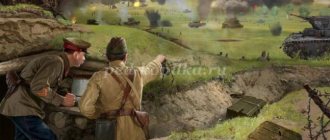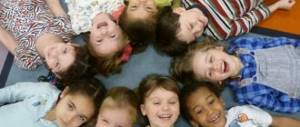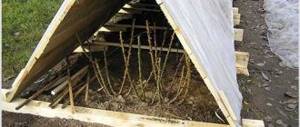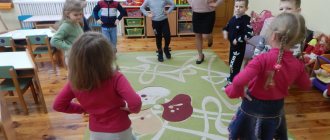Summary of GCD in the preparatory group. "Transport"
Tasks:
Educational:
1. Activate the subject and verbal dictionary on the topic “Transport”, generalizing the concepts of modes of transport. 2. Strengthen word formation skills. 3. Continue to teach how to coordinate nouns and numerals in gender, number, and case. 4. Continue learning to form relative adjectives. 5. Enrich the vocabulary on this topic with new words: seaport, airport, airfield, bus station, railway station.
Educational:
1. Develop the ability to make inferences through making sentences. 2. Develop attention and logical thinking.
Educational:
1. Create conditions for an emotionally positive attitude in children.
TSO funds
Material: pictures with types of transport, didactic games “4-odd”, “1-2-5”, toy driver and bus, route diagram, flat image of Aibolit, first aid kit, racks with pictures: bus, train, plane, ship.
GCD move
1. Organizational moment
Children are included in the group.
- Look how many guests there are, say hello and share your good mood.
2. Report the topic of the lesson
The phone rings.
- Guys, Aibolit just called me... trouble... he has run out of all his medicine, he has nothing to treat animals with? What to do? Where can I get them? (Let's take a first aid kit).
Oh, do you agree to go on a trip with me to take medicine there?
Remind me where to go? I think he's in America. (No, in Africa).
How do we get there? There is both water and air, The one that moves on land, Carrying cargo and people, What is it? Tell me quickly? (transport)
— The path is long, we will need different transport.
And the old map of Aibolit will help us get there. Let's look at it: what will we drive first, and then? (We will go by bus, then by train, fly by plane, sail by ship).
- But we will have to complete tasks along the way.
- Guys, where should we go to catch the bus? (to the bus station)
1. Bus station
Guys, before you go, you need to inspect the bus, is everything okay?
Game “Name Where?”
The driver approached (the bus) and climbed in where? (under the bus) Where did you get out from? (from under the bus) The driver went where? (behind the bus) Where did the driver come from? (from behind the bus) The driver got into where? (to the bus) The driver got off where? (from the bus) The driver got on the bus...we're leaving. —Where do we need to go to catch the train? (to the train station)
Finger gymnastics
Bus, trolleybus, Car, tram, Don’t forget about them on the street, There are ships, icebreakers, ships in the seas, They never come here. Here we are...
2. Train station
Ball game: “Explain the word” - word formation.
— Guys, what does “railway transport” mean, what is it?
Well done, tell me what kind of transport I thought of?
Game: "Complicated words"
Transports using electricity - electric locomotive Transports using steam - steam locomotive Mixes concrete - concrete mixer Dumps loads itself - dump truck It flies - airplane Walks everywhere - all-terrain vehicle Removes snow - snowblower
Game: “Which” - relative adjectives
Our carriage is very comfortable, modern. It has glass windows, so what are they?….(glass) The seats are made of leather, so what are they?…….(leather) Handrails are made of plastic, what are they? ….(plastic) Roof made of metal…(metal) Walls made of iron, so what are they?….(iron) Doors made of wood… what are they? …..(wooden) Handles made of tin what..(tin)
- It's time to move on. Where is our plane? Where will we go? (to the airport) We are traveling on rails, we are traveling on sleepers, the train is moving quickly, the train is traveling late. - We arrived.
3. Airport. Individual work with cards.
- Look, you have tickets, and there are tasks for them. Name what you have, find an extra item, explain why?
Game: “4 is extra”
- Oh, now - let's fly. To get on the ship, where do we need to go? (to the seaport)
Physical exercise: “Airplane”
Hands to the sides - in flight We send the plane, Right wing forward, Left wing forward, Our plane has flown - we have arrived.
4. Seaport. Individual work with cards.
Game: “1-2-5” - agreement of nouns with numerals.
4. Africa. Presentation.
- Well, we delivered the medicine. Look how happy the animals are. It's time to go back. - Oh, what magical fairy-tale transport do you know to get to the garden faster? Sit on the magic carpet...close your eyes...1,2,3
5. In a group
- Do you remember how we got to Africa? Let's tell you. Practicing prefixed verbs according to a schematic plan.
“We left the bus station by bus, drove along the road, drove around the Christmas tree, drove up to the bridge, drove onto the bridge, drove off the bridge, drove up to the railway station. We left the railway station, drove through the city, drove around the forest, and arrived at the airfield. They took off from the airfield on an airplane, flew across the sky, flew over the mountains, and arrived in another city. They sailed from the port on a ship, sailed across the sea, sailed around the islands, swam far, sailed to Africa.”
Summary of the lesson. Assessment of children's activities. - What did you like? What tasks do you remember? What were they talking about? Petrova L.A. teacher-speech therapist, MBDOU 27, Murmansk
Tags: cases, adjectives, nouns, transport, numerals
- Related Posts
- Summary of the complex lesson “Travel to the Island”
- Outline of a speech therapy lesson on the topic “Rb sound”
- Summary of the frontal lesson “Letters A and U. Dispute of letters from the box.”
« Previous entry
A brief outline of a lesson on the topic “Transport” in the preparatory group
For classes with children in kindergarten, it is necessary that they are built in accordance with the Federal State Educational Standard, help them develop, improve speech skills, attention and imagination, and prepare them for school life in the future. The following is an example of one of the classes dedicated to expanding and deepening knowledge about transport.
Card index of didactic games in mathematics for the second junior groups
Goals and objectives
As a result of the lesson, children will be able to expand their existing knowledge and gain new knowledge about what types of transport exist and what professions are associated with it. At the same time, they learn to identify the similarities and differences (in size, color and shape) of different types of cars and trucks.
In the process of working with children, it is planned to solve the following problems:
- They are taught the skills to be open and communicate freely with their peers and with adults.
- The vocabulary related to passenger, special and cargo transport, and parking lots is being enriched.
- Learning to conduct a dialogue using grammatically correct forms of speech.
- Teaching the formation of singular and plural numbers in nouns, the formation of adjectives based on nouns.
- Improving gross and fine motor skills, developing coordination of movements.
- Development of knowledge about land, water and air modes of transport.
- Consolidating skills in performing activities as part of a team in accordance with the plan.
- Children are taught to play with construction sets.
- Developing coordination of movements and the ability to maintain balance.
Important! One of the important tasks of working with children is to perform speech therapy exercises to help them develop communication skills.
Here is one possible lesson planning option.
Main part
The lesson begins with playing with a ball. The teacher throws a ball to the child. He must answer the question “What am I driving?” and throw the ball back. Then the teacher throws the ball to another kid and everything starts all over again. When the game ends, the children are asked what the topic of today's lesson is. The children give different answers and the teacher sums it up and says that the topic of today’s lesson is “Transport.”
Water transport
Then a letter is read out that came to the kindergarten from the village of Prostokvashino from the postman Pechkin. It tells that Sharik and Matroskin are going to build a new house. They needed building materials and asked Pechkin to deliver them. He said that he could not bring them by bicycle, but he had heard that there were vehicles. He turns to the guys and asks them to help figure out what it is and explain it to him so that he can help his friends.
Children are asked what to do now. They answer that it is necessary to help the postman Pechkin.
The next game is called "Journey". Children stand one after another, like a locomotive and carriages.
The teacher says that everyone has arrived at the parking lot and asks the kids to tell what it is. (Children answer). He explains to them that this is a place where cars are parked. It is intended for their parking or storage.
The board shows pictures of various machines. Children are given the task to name them and tell what they are for.
Kids are asked what kind of vehicles can be used to transport construction materials, and what such vehicles are called. They answer that these are trucks designed to transport heavy loads.
Differences from passenger cars are discussed. (The wheels are larger. Freight trucks carry sand or boards, while passenger cars carry people. The former have a cabin in which the driver is located, while buses have a cabin for passengers.)
Important! The teacher shows pictures of various vehicles and asks them to tell which car is shown.
Children are asked questions related to transport:
- What are the names of the people who are carried in the passenger compartment? (Passengers).
- Who drives a truck or car? (Driver).
- Which car can help postman Pechkin? (Cargo).
- Where do the vehicles around people move on the streets? (On the ground).
- Who regulates the traffic on the streets? (Traffic controller. Traffic lights and road signs are also used for this).
Musical education of preschool children
Important! Children are given envelopes containing images of road signs, cut into pieces. Children organize themselves into teams, surround tables and collect images.
A physical education session is held. It's called "Motor Ship". It is performed to the accompaniment of poems read by the teacher:
- “The ship pushed off from the green pier” (kids get up to the count of one, two).
- “He stepped back first” (take a step back for two counts).
- “And then he stepped forward” (now everyone takes a step forward in the same rhythm).
- “And he swam and swam along the river” (kids perform wave-like movements with their hands).
- “Going into full swing!” (Everyone walks in place).
Children are seated in front of an interactive board. They are asked a question about what transport is. Everyone discusses the answers together. They say that freight transport is what can help postman Pechkin.
They are discussing what will happen if a truck with construction materials is blocked by a river or sea.
Air Transport
They discuss what water or air transport is and what their features are.
Children are asked to play the following game:
- They are given pictures that depict different types of transport.
- Children are divided into three groups, each of which chooses one type of them: automobile, water or air.
- Each of them selects pictures belonging to one of three varieties and places them in the designated place on the game board.
- The kids are discussing which cars can be used by postman Pechkin. (A truck for transporting construction materials, a “Mail” car for delivering correspondence).
The game "Garage" begins:
- To do this, a labyrinth is made on the board through which children must guide the ball to its destination. There are three of them, each color corresponds to one of the types of equipment (special vehicles, passenger cars and trucks).
- Each of the three teams has one maze. They compete against each other against the clock.
- A physical education session is held while reading poetry.
Exhibition of drawings
Then they play the game “Load the car”:
- To do this, the children are given a board on which a labyrinth is made. Children must guide the ball along it to the destination. Along the way, they end up in cells where there are images of building materials. At the same time, the name of the cargo is pronounced loudly. When the maze is completely completed, it turns out that the car is completely loaded.
- Next is the game “Ship”, for which you need a set of transparent cubes. Children are divided into two groups. One of them is building a two-story ship, the other is building a one-story ship.
The Shagomobile game is played as follows:
- Children are divided into two teams.
- A chair is placed in front of each of them at some distance.
- Each child with a stick in his hands must go around the chair and pass it to the next participant.
- The team that does everything the fastest wins.
- This concludes the lesson.
Introspection
At the end of the lesson, the kids are asked if they liked learning new things about transport. (Kids' answers). They repeat what it is like (land, water and air).
The GCD is summed up (we figured out how to help the postman Pechkin). The teacher says that today he will be sent a response to the letter he received. As a result, Pechkin will be able to help Sharik and Matroskin.
Every activity with children should not only develop their inner world, but also be exciting. A series of lessons dedicated to mastering knowledge on transport topics will allow children to learn more about various types of such cars and more confidently understand the rules of behavior for pedestrians on the street, and will improve their speech skills and vocabulary in this area.





